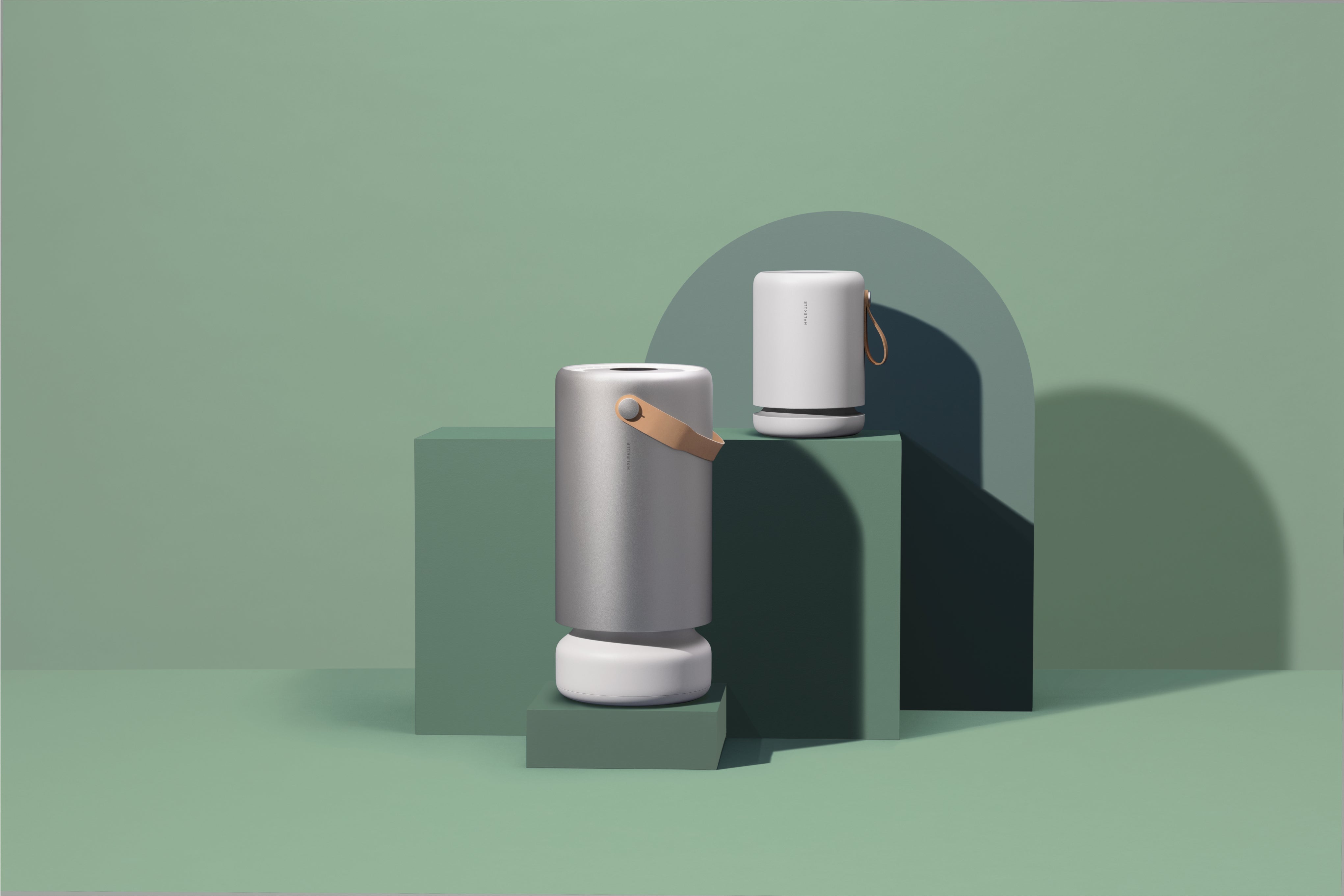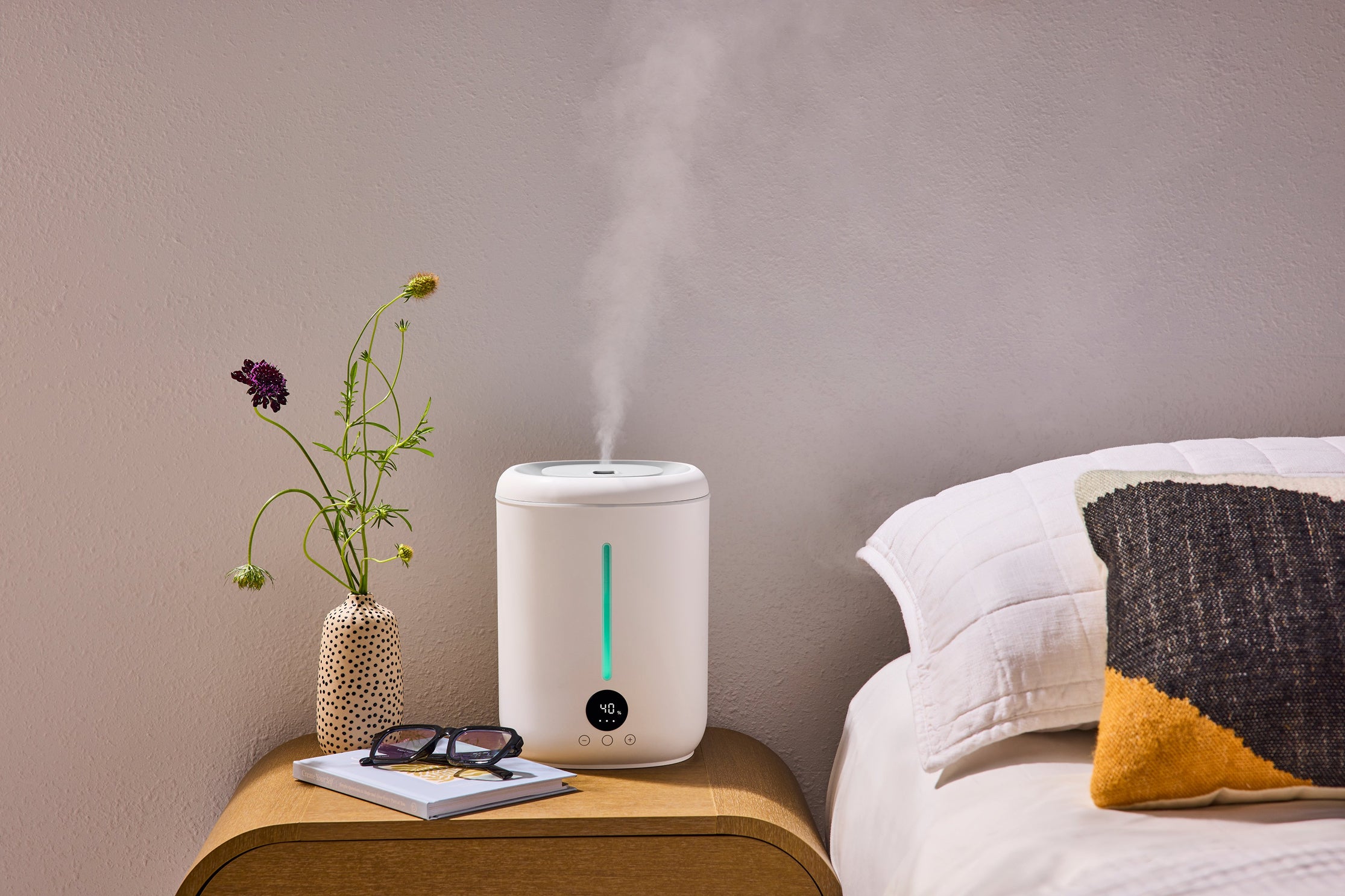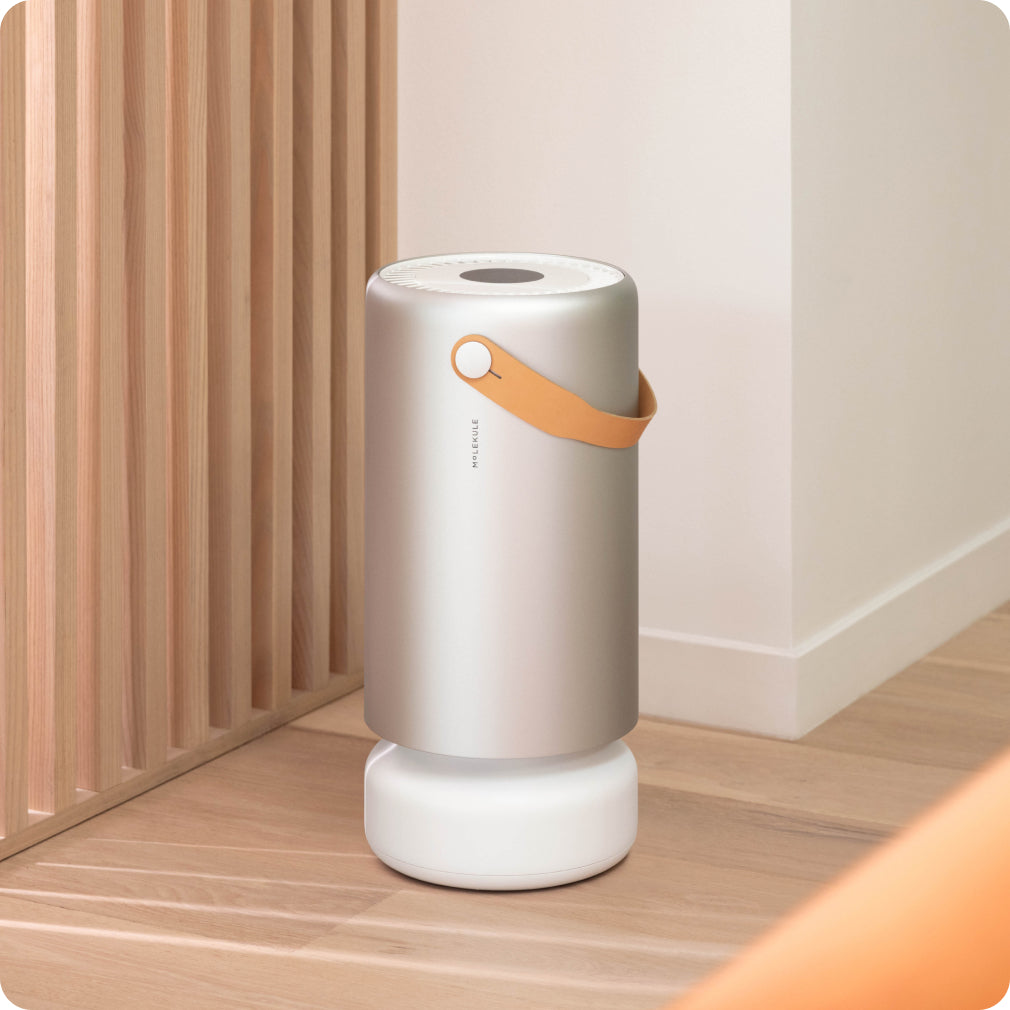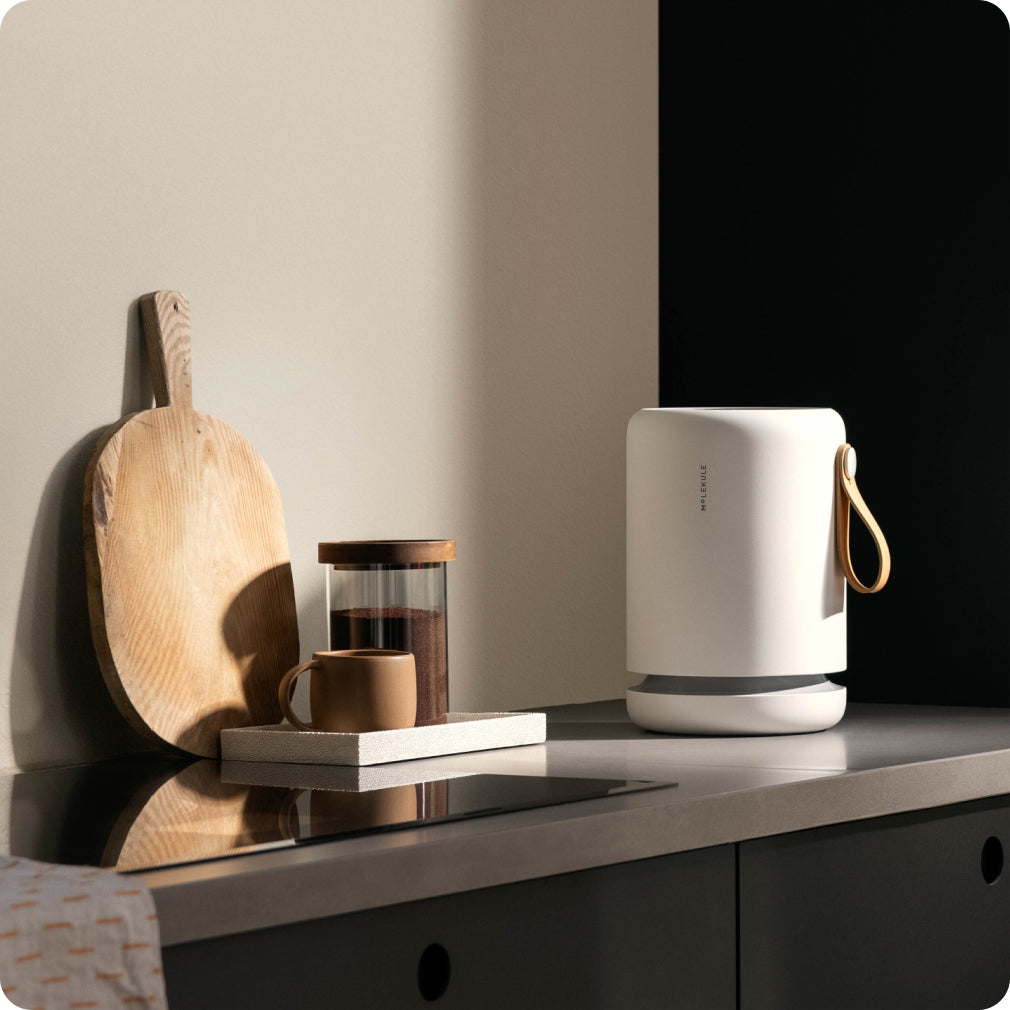Key Takeaways
-
Yes, scientific evidence supports the ability of an air purifier to significantly reduce indoor smoke particles and gases.
-
Combination approaches using HEPA plus substantial carbon provide most comprehensive smoke protection.
-
Size is important: Undersized units cannot effectively clean room air during heavy smoke events.
-
Proper positioning maximizes air cleaning efficiency.
-
Filters require more frequent attention during and after smoke events.
Air purifiers help combat wildfire smoke by filtering out harmful particulate matter and removing toxic gases through specialized filtration systems. During wildfire events, these devices continuously cycle indoor air through HEPA filters, which capture up to 99.97% of smoke particles as small as 0.3 microns.
Let’s look at why certain air purifier technologies dramatically outperform others when confronting the complex mixture of compounds in wildfire smoke.
What’s in Wildfire Smoke?
Before exploring how air purifiers combat wildfire smoke, it's essential to understand what this smoke actually contains. Wildfire smoke is a complex mixture of particulate matter, gases, and chemical compounds that varies based on what's burning, fire temperature, and weather conditions.
The most dangerous component of wildfire smoke is particulate matter, categorized by size:
-
PM10 (10 micrometers or smaller): Larger particles that can irritate eyes, nose, and throat.
-
PM2.5 (2.5 micrometers or smaller): Fine particles that can penetrate deep into lungs and even enter the bloodstream.
-
Ultrafine particles (<0.1 micrometers): Can pass directly into the bloodstream and reach organs.
To put this in perspective, a human hair is about 70 micrometers in diameter, meaning these dangerous particles are 30 to 700 times smaller than what's visible to the naked eye.
Harmful Gases in Wildfire Smoke
Wildfire smoke contains numerous gaseous pollutants:
|
Gas |
Source |
Health Concern |
|
Carbon monoxide (CO) |
Incomplete combustion |
Reduces oxygen delivery in body |
|
Nitrogen oxides (NOx) |
High-temperature combustion |
Respiratory irritation, contributes to ozone formation |
|
Volatile organic compounds (VOCs) |
Burning vegetation and structures |
Eye/respiratory irritation, some are carcinogenic |
|
Formaldehyde |
Burning of building materials |
Respiratory irritation, carcinogen |
|
Acrolein |
Burning of wood and structures |
Severe respiratory irritation |
What Makes Wildfire Smoke Particularly Dangerous
Wildfire smoke differs from typical air pollution in several important ways:
-
Concentration levels: Wildfire events can produce particulate concentrations 10-50 times higher than typical urban pollution.
-
Chemical composition: Contains unique combinations of compounds from burning forests, homes, and infrastructure.
-
Distance traveled: Can impact areas hundreds of miles from the actual fire.
-
Duration of exposure: Smoke events can last days or weeks.
-
Indoor infiltration: Up to 70% of outdoor smoke particles can penetrate standard homes.
How Do Smoke Particles Enter Your Home?
Even with your windows and doors closed, wildfire smoke finds multiple entry paths:
-
Ventilation systems: HVAC systems without adequate filtration.
-
Structural gaps: Around windows, doors, and utility penetrations.
-
Natural ventilation: Necessary air exchanges in non-sealed homes.
-
Door openings: Brief openings allow smoke surges.
-
Window leaks: Especially in older homes with poor sealing.
Standard dust filters capture only larger particles, while wildfire smoke contains primarily fine and ultrafine particles that require advanced filtration technologies like those in air purifiers for smoke. Without filtration, indoor particulate levels during wildfire events create a significant health risk, as Americans spend most of their time indoors. It’s worth taking the time to research the best air filters for wildfire smoke if you live in a susceptible area.
Health Risks of Wildfire Smoke Exposure
Exposure to wildfire smoke poses significant health risks that make maintaining clean indoor air essential during smoke events. Understanding these risks helps clarify why effective air purification is a critical intervention.
Even short-term exposure to wildfire smoke can cause:
-
Respiratory irritation: Coughing, sore throat, difficulty breathing.
-
Eye irritation: Burning, redness, excessive tearing.
-
Headaches: Due to carbon monoxide and other pollutants.
-
Reduced lung function: Decreased capacity, increased effort to breathe.
-
Exacerbation of existing conditions: Worsening of asthma, COPD, bronchitis.
-
Chest pain: Particularly in people with heart conditions.
-
Fatigue: From reduced oxygen efficiency.
These immediate symptoms can appear within hours of exposure and affect even healthy individuals.
Long-Term Health Concerns
With increasing wildfire frequency in many regions, researchers are documenting concerning long-term health impacts:
-
Permanent lung damage: Reduced lung capacity and function.
-
Increased cardiovascular disease risk: Higher rates of heart attacks and strokes.
-
Heightened cancer risk: Due to carcinogenic compounds in smoke.
-
Premature mortality: Studies link regular wildfire smoke exposure to shortened lifespan.
-
Potential neurodevelopmental effects: Emerging research suggests cognitive impacts.
A study published in the Journal of the American Heart Association found that hospital admissions for respiratory issues and cardiovascular issues increased during heavy wildfire smoke events.
Vulnerable Populations Are at the Greatest Risk
While everyone should minimize smoke exposure, certain groups face substantially higher risks. For these vulnerable groups, creating clean air spaces within the home is particularly crucial during wildfire events.
-
Children: Developing lungs, higher respiratory rates, more time outdoors.
-
Seniors: Reduced respiratory capacity, often with pre-existing conditions.
-
Pregnant women: Potential impacts on fetal development.
-
People with respiratory conditions: Such as those with asthma or allergies, COPD, cystic fibrosis.
-
Heart disease patients: Increased strain on the cardiovascular system.
-
Diabetics: Often have compromised cardiovascular systems.
-
Low-income communities: Typically have less access to filtration and sealed homes.
How Air Purifiers Work for Wildfire Smoke
Air purifiers are specifically designed to address the dangerous components of wildfire smoke through multiple filtration mechanisms. Understanding how these devices work helps explain their effectiveness during smoke events.
Basic Filtration Process
Most home air purifiers operate through a multi-stage process to remove wildfire smoke components:
-
Air intake: Fans draw in smoke-filled room air.
-
Pre-filtration: Captures larger particles to protect main filters.
-
Primary filtration: HEPA or equivalent filtration for fine particles.
-
Specialized filtration: Activated carbon for odors, like to get rid of that fire smoke smell.
-
Optional technologies: Additional processes like ionization or UV treatment.
-
Clean air output: Purified air returned to the room.
This continuous cycle gradually reduces the concentration of smoke particles and gases in your indoor air.
Particle Removal Capabilities
The gold standard for particle removal is True HEPA filtration:
|
Particle Size |
HEPA Removal Efficiency |
Common Smoke Components |
|
>10 μm |
100% |
Ash, large soot particles |
|
2.5-10 μm |
>99.99% |
Pollen, dust, mold spores in smoke |
|
0.3-2.5 μm |
99.97% |
Most wildfire smoke particles |
|
<0.3 μm |
95-99.95% |
Ultrafine smoke particles, some gases |
Gaseous Pollutant Removal
While HEPA excels at particle filtration, gaseous components of smoke require additional filtration technologies:
-
Activated carbon: The primary technology for gas/VOC removal.
-
Works through adsorption (chemical bonding to carbon surface).
-
Most effective for organic compounds in smoke.
-
Capacity depends on carbon quantity (measured in pounds).
-
Potassium permanganate impregnated filters:
-
Enhance removal of formaldehyde and other aldehydes in smoke.
-
Change color as they become saturated.
-
Zeolite and other mineral filters:
-
Complement carbon for removing specific gas compounds.
-
Often included in specialized smoke filtration units.
The effectiveness of gas filtration varies significantly between air purifier models, with premium units containing 5+ pounds of specialized media compared to budget models with less than 8 ounces.
Advanced Technologies for Smoke Removal
Beyond mechanical filtration, some air purifiers incorporate additional technologies:
-
PECO (Photo Electrochemical Oxidation):
-
Uses light-activated catalyst to destroy organic molecules.
-
Can break down VOCs and smoke compounds at molecular level.
-
Destroys pollutants rather than just trapping them.
-
Plasma/Ionization:
-
Creates charged particles that attach to smoke components.
-
Can enhance capture of ultrafine particles.
-
Some units produce trace ozone (potential concern).
-
UV-C Light:
-
Limited effect on particulate matter.
-
May help reduce some biological components.
-
Generally not the primary technology for smoke.
Real-Time Adaptation to Smoke Conditions
Modern air purifiers often include sensors to detect smoke infiltration and adjust operation accordingly:
-
Particle sensors: Detect increasing smoke concentrations.
-
Gas sensors: Monitor VOC levels from smoke.
-
Auto mode: Increases fan speed when smoke is detected.
-
Air quality indicators: Provide visual feedback on current air quality.
-
Smart connectivity: Some units can respond to outdoor air quality reports.
This adaptive capability ensures maximum filtration during critical periods while conserving energy and reducing noise during cleaner periods.
Technology Combination Approaches
The most effective air purifiers for wildfire smoke utilize multiple technologies:
|
Technology Combination |
Particle Removal |
Gas Removal |
Odor Elimination |
Maintenance Needs |
|
HEPA + Carbon |
Excellent |
Good |
Moderate |
Filter replacement |
|
HEPA + Carbon + PECO |
Excellent |
Excellent |
Excellent |
Filter replacement, light replacement |
|
Electrostatic + Carbon |
Good |
Good |
Moderate |
Plate cleaning, carbon replacement |
|
HEPA + Carbon + Ionization |
Excellent+ |
Good |
Moderate |
Filter replacement |
Choosing the Right Air Purifier for Wildfire Smoke
When evaluating air purifiers specifically for wildfire smoke, prioritize these critical features:
-
True HEPA filtration: Ensures 99.97% particle removal at 0.3 microns.
-
Substantial activated carbon: Minimum 2 pounds for effective gas removal.
-
Air quality sensors: Allow automatic response to smoke infiltration.
-
Filter replacement indicators: Signal when filtration capacity is compromised.
-
Multiple fan speeds: Provide higher filtration during smoke events.
-
Low noise at high speeds: Ensures usability during overnight smoke events.
Maximizing Air Purifier Effectiveness During Smoke Events
Having the right air purifier is only the first step — proper use dramatically increases its effectiveness during wildfire smoke events.
Where you position your air purifier significantly impacts its performance:
-
Primary placement rule: Position in spaces where you spend most time (bedroom, living room).
-
Clearance requirements: Keep at least 2 feet of open space around all sides.
-
Avoid corners: Reduces air circulation efficiency.
-
Height considerations: Place on table/shelf for small units (2-3 feet high).
-
Doorway positioning: For single-unit homes, near doorway allows some filtration of adjacent rooms.
-
Avoid obstructions: Keep away from curtains, furniture that could block airflow.
-
Avoid competing airflow: Position away from fans, HVAC vents, or windows.
Other Smoke Reduction Methods
Air purifiers work best as part of a comprehensive approach:
-
HVAC filtration upgrade: Install MERV 13+ filters in the central system.
-
Window and door sealing: Apply weatherstripping to reduce infiltration.
-
Reduced outdoor air exchange: Minimize opening doors during smoke events.
-
Indoor activity modification: Avoid cooking, burning candles, vacuuming.
-
Strategic ventilation: If the wildfire spread slows and a temporary clearing occurs, briefly ventilate then resume purification.
Create Your Wildfire Smoke Defense Strategy
Air purifiers represent one of the most effective interventions for maintaining healthy indoor air during wildfire smoke events. When properly selected, positioned, and maintained, these devices can dramatically reduce your exposure to harmful smoke components.
Preparation Before Fire Season
The best time to prepare for wildfire smoke is before fire season begins:
-
Assess your needs: Identify key spaces requiring protection from wildfire smoke.
-
Select appropriate purifiers: Match technologies and sizing to your specific requirements.
-
Stock replacement filters: Keep extras on hand for extended smoke events.
-
Create a clean room plan: Identify which room will serve as main refuge.
-
Consider a whole-house approach: Upgrade HVAC filtration as baseline protection.
By understanding how air purifiers work against wildfire smoke and implementing these strategies, you can significantly reduce your exposure to harmful smoke components and protect your health during increasingly common wildfire events.
Frequently Asked Questions
How quickly will an air purifier remove wildfire smoke from a room?
A properly sized air purifier will remove the majority of smoke particles within 30-60 minutes, though complete gas removal takes longer.
Can one air purifier protect my entire home?
No, a single unit cannot effectively clean a whole house; focus on bedrooms and main living areas with separate units or consider whole-house HVAC filtration.
How often should I replace filters during wildfire season?
Check pre-filters weekly during smoke events and be prepared to replace main filters 2-3 times more frequently than normal.
Do air purifiers remove the smell of smoke completely?
Units with substantial activated carbon (2+ pounds) can significantly reduce smoke odor, while those with molecular destruction technology may eliminate it completely.
Is it better to use my HVAC system or portable air purifiers during smoke events?
Ideally, use both: run HVAC with MERV 13+ filter for baseline whole-house filtration and add portable air purifiers in rooms where you spend the most time.
Will air purifiers protect against the gases in wildfire smoke?
Only models with substantial activated carbon or other specialized gas filtration media will effectively reduce toxic gases from wildfire smoke.







